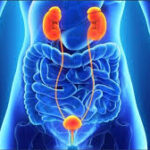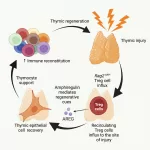A recent study published in Alcohol: Clinical & Experimental Research highlights a concerning risk for older adults with alcohol use disorder (AUD): the underestimation of their impairment in visual processing after drinking. The study reveals that alcohol significantly affects eye movement reaction time, speed, and accuracy in older adults, with those suffering from chronic AUD experiencing notable impairment.
The study, which is the first of its kind to examine alcohol’s acute effects on eye movements, pupil size, and self-perception of impairment in older adults with AUD, compared a group of adults with AUD to a control group of light drinkers. It found that alcohol disrupts visual functions, leading to delayed reactions and reduced accuracy in both groups. However, the impact was particularly concerning for the AUD group, as they were less aware of their impairment compared to light drinkers.
Researchers from Chicago conducted a placebo-controlled, double-blinded study involving 117 adults aged 40–65. Participants, consisting of 62 light drinkers and 55 individuals with chronic AUD, were subjected to eye tracking tests both before and after consuming alcohol or a placebo. Eye tracking measures included smooth pursuit (following a predictable target) and saccadic eye movements (quick, unconscious movements toward randomly appearing targets).
The results showed that while individuals with AUD were less affected by alcohol during smooth pursuit tasks, they were equally impaired as light drinkers when it came to saccadic movements, which require quick reactions to unpredictable stimuli. More notably, individuals with AUD were less likely to recognize their impairment, leading to a false sense of confidence in their ability to perform tasks or drive while intoxicated. This could contribute to the high rates of alcohol-related accidents among individuals with chronic alcohol use.
In the study, both groups exhibited pupil dilation after consuming alcohol, with light drinkers experiencing more impairment than those with AUD in the smooth pursuit task. However, both groups showed similar impairments in saccadic tasks, with slower response times, reduced accuracy, and delayed reactions to targets that appeared unpredictably.
The findings underline the risk of alcohol-related accidents among older adults with chronic AUD, who may lack awareness of their impairments and overestimate their abilities. Despite developing tolerance to certain alcohol-induced effects, these individuals remain vulnerable to significant cognitive and visual dysfunction while under the influence of alcohol.
This study aligns with previous research showing that individuals with AUD are sensitive to alcohol’s effects but often unaware of the extent of their impairment. With alcohol-related injuries on the rise, these findings underscore the need for better awareness and interventions for older adults with chronic AUD.
Disclaimer: This study examined the effects of alcohol consumption in a controlled laboratory setting and should not be considered as an endorsement of alcohol consumption. Alcohol use can have serious health risks, and this study only provides insights into one specific aspect of alcohol’s effects on older adults. Individuals concerned about alcohol use disorder should consult a healthcare professional for advice and treatment.










